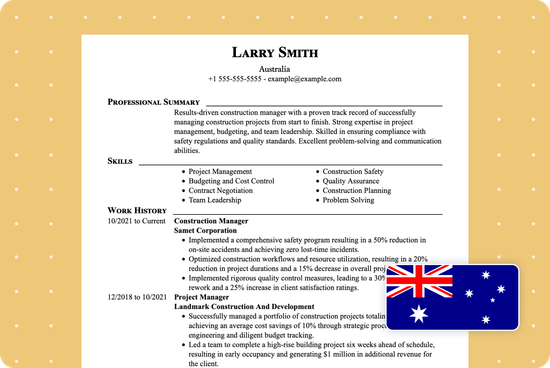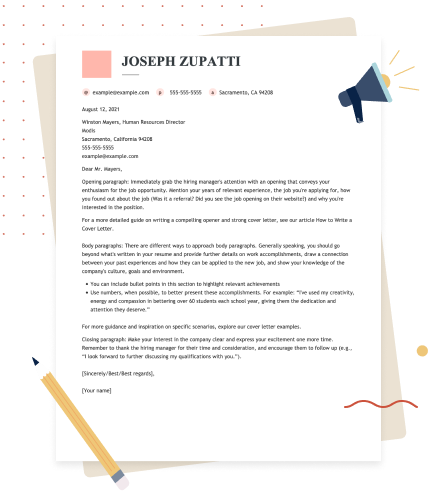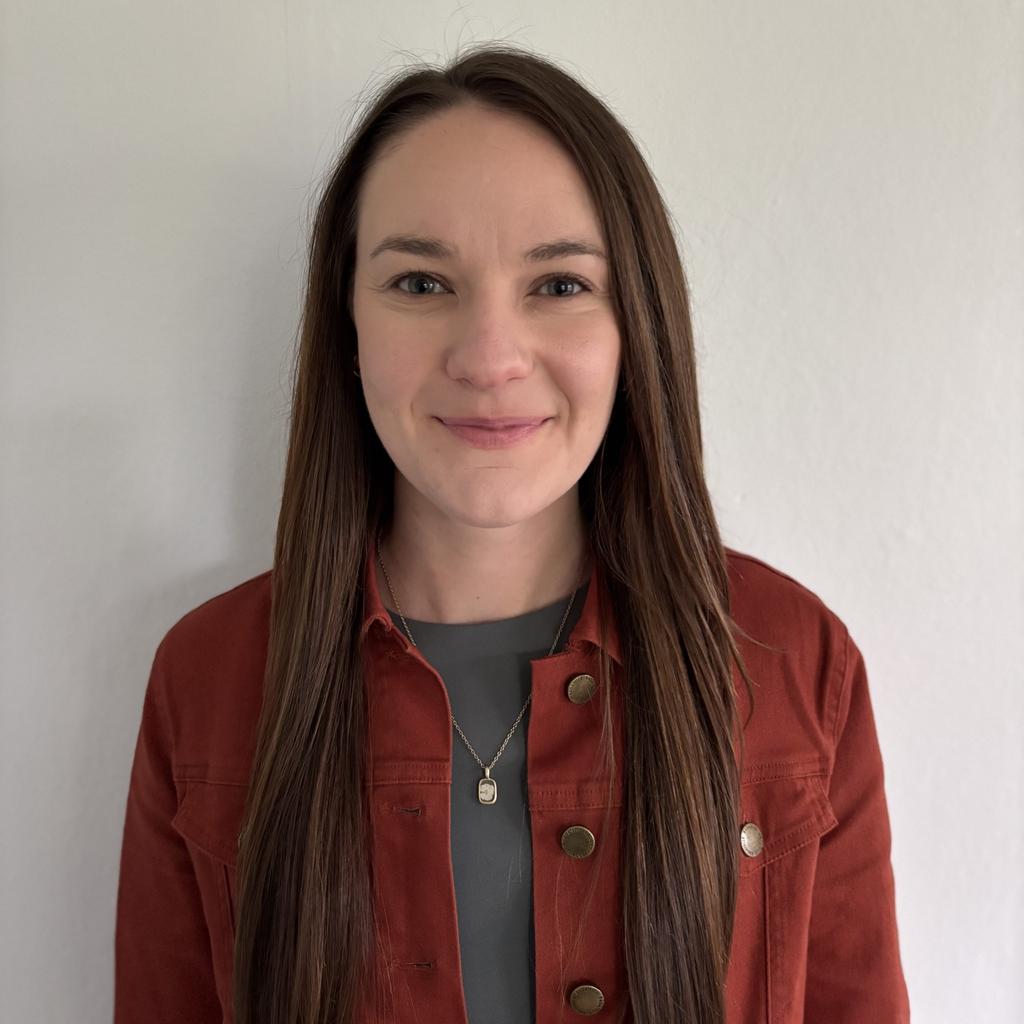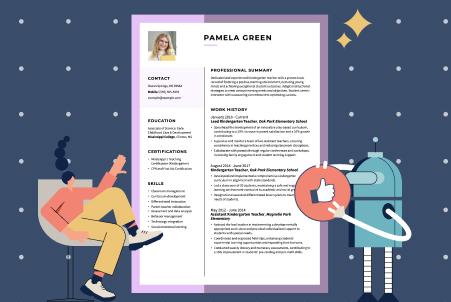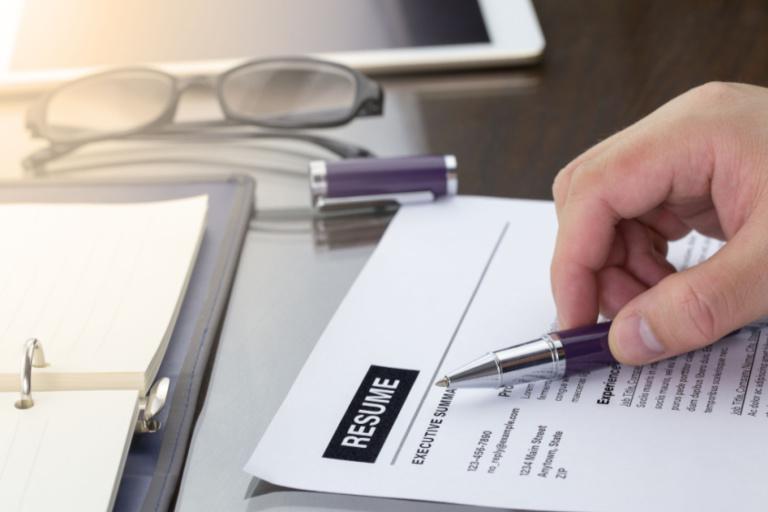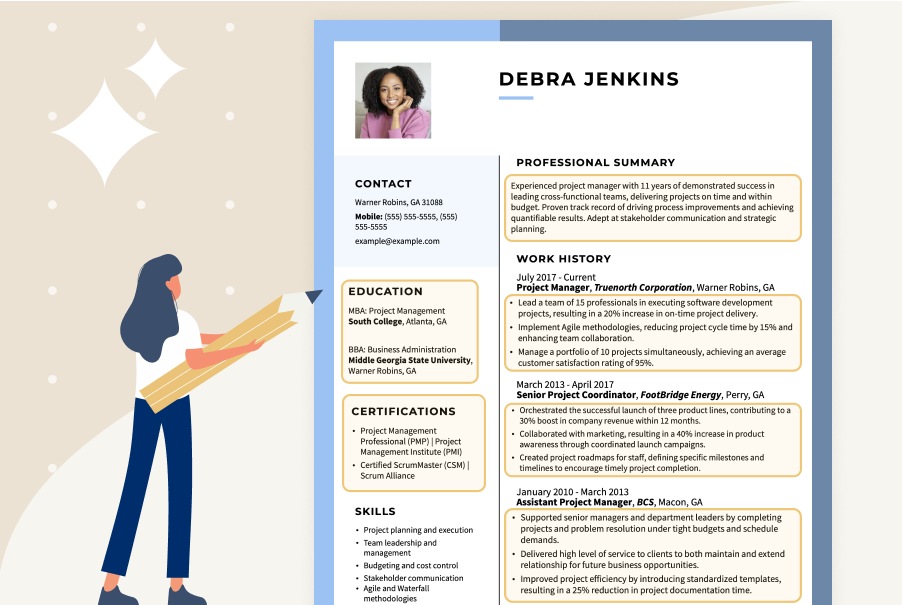Australian Resume Format: Best Practices & Examples

Our customers have been hired at: *Foot Note
Breaking into the Australian job market starts with crafting a compelling resume that follows local conventions and highlights your unique skills and qualifications.
We’ll delve into the nuances of Australian resume format best practices and pro tips to maximize your chances of standing out from the competition and landing your dream role.
What Makes Australian Resumes Unique?
In many ways, Australian resumes and U.S. resumes resemble one another. However, there are a few key differences to keep in mind when crafting your Australian resume from abroad.
Terminology
In Australia, the terms “resume” and “CV” are often used interchangeably, with “resume” being the preferred term.
This differs from the U.S., where resumes and American CVs are distinct documents, and from European countries, where CVs are commonplace and have unique formatting differences.
Explore our guide on CVs versus resumes for additional details on what differentiates these two documents.
Length
The key difference between U.S. and Australian resumes is their length. Whereas a one-page resume or two-page resume is preferred in the States, the average Australian resume length is around two to three pages long.
The exact length of your Australian resume will depend on your professional background and years of experience. Here are some general guidelines you can follow:
- University students or recent graduates: One to two pages
- Early career or midlevel professionals: Two to three pages
- Senior or executive-level professionals: Three to five pages
Ultimately, the content of your resume is more important than the length. In Australia, your resume should only go back 10-15 years unless you have additional, highly relevant experience.
Dialect
You can follow Australian English spelling and vocabulary conventions in your resume to impress employers and demonstrate your ability to adapt to the culture.
Below are a few examples of how Australian English differs from American English.
Spelling:
- American English — "color," "center," "realize"
- Australian English — "colour," "centre," "realise"
Vocabulary:
- American English — "elevator," "apartment," "gasoline"
- Australian English — "lift," "flat," "petrol"
Units of measurement:
- American English — "miles," "pounds," "quarts"
- Australian English — "kilometres," "kilograms," "litres"
We recommend exploring any variations in industry terminology that may apply to you. For example, in Australia, the legal system is influenced by British common law, and terms like "barrister" and "solicitor" are commonly used. In contrast, in the U.S., "attorney" or "lawyer" is more prevalent.
Australian Resume Formatting Tips
Aside from the length, Australian resume format conventions are very similar to those in the United States.
Here are a few formatting tips to keep in mind while you craft your resume:
- Use a professional resume font — the Australian Government Department of Employment and Workplace Relations notes that Calibri and Arial in size 11-point are good options.
- Your document margins should be 1 inch on all sides. If you need additional space, you can reduce the margin size, but it should not go below half an inch.
- Use single line spacing throughout your document or up to 1.5 line spacing to enhance readability. Additional white space makes your resume easy to scan.
- To ensure your resume is ATS-friendly, do not use images, tables, or graphics that can confuse applicant tracking systems (ATS).
- If you plan to print your resume, use A4 (8.3” x 11.7”) paper size rather than U.S. letter (8” x 11”) paper size.
See our library of professional resume templates to create an Australian resume that follows regional standards and impresses recruiters.
Australian Resume Examples
Explore the professionally crafted Australian resume templates below.
Note that the samples below are one page long. You can use them as a starting point and expand your resume up to five pages to adhere to Australian resume conventions.
You can also browse our library of resume examples for additional samples built by professional graphic designers.
What to Include in an Australian Resume
See what information to include in an Australian resume to stand out from local and international candidates.
Contact information
Your Australian resume should have a header that includes your full name, email address, and a phone number with an international dialing code.
Do not include personal information such as age, marital status, religion, or nationality, as this could result in your resume being rejected due to Australia's anti-discrimination policies.
For your physical address, you’ll want to make it clear that you are either in the process of relocating to Australia or open to relocating if you have not yet established residence there.
Here is an example header for an applicant who is relocating to New South Wales:
LUCY GARCIA
lgarcia@email.com │ +1 (555) 555-555 │ WA, USA ( *Relocating to NSW, AU )
Professional summary
Include a three- to five-sentence resume summary at the top of your Australian resume. Your summary should highlight the key qualifications that make you an excellent fit for the role.
It is important to tailor your resume to the role by highlighting skills and qualifications that directly relate to the job description. Here is an example:
“Results-oriented marketing professional with over five years of experience developing and executing successful digital marketing campaigns. Skilled in SEO, SEM, social media marketing, email marketing, and content creation. Proven track record of driving brand awareness, customer engagement, and revenue growth through strategic planning and innovative marketing strategies.”
In Australian culture, it is considered distasteful to brag too much about your traits or abilities in the workplace.
Avoid self-inflating adjectives such as “exceptional,” “outstanding,” or “incredible,” and instead, let your experience speak for itself.
For instance, in the sample above, the job seeker describes their “proven track record” of executing successful marketing campaigns.
Skills section
Ensure that your resume skills section features job-relevant skills that accurately describe your capabilities.
According to the Australian Government Department of Employment, Skills, Small and Family Business, the following are the most sought-after skills by employers:
- Teamwork
- Organizational skills
- Problem-solving skills
- Communication skills
- Creativity and initiative
Remember to include a balance of hard skills (e.g., Google Analytics and A/B testing) and soft skills (e.g., cross-functional collaboration and creative problem-solving). Here is an example skills section for a digital marketing position:
Skills
- Google Analytics
- A/B testing
- Social media marketing
- Content strategy development
- Campaign planning and execution
- Cross-functional collaboration
- Creative problem-solving
Work experience
The work experience section on an Australian resume can be more detailed than a U.S. resume.
Australian employers often appreciate comprehensive information about a candidate's work history, responsibilities, and achievements.
Your resume’s work history section should list your past roles in reverse-chronological order, starting with your current or most recent role.
If you think the hiring manager won’t be familiar with the company names, you can provide a short blurb describing each one, for example:
Marketing Manager │ Feb 2021 – Present
XYZ Corporation, Seattle, WA
XYZ Corporation is a leading technology company specializing in software development and digital solutions for businesses worldwide.
- Led a team of five marketing professionals in developing and executing comprehensive marketing strategies to increase brand awareness and drive lead generation.
- Implemented targeted digital marketing campaigns that resulted in a 30% increase in website traffic and a 25% increase in qualified leads.
- Managed the company's social media presence, including content creation, community engagement, and advertising, leading to a 50% growth in followers.
In the example above, you’ll also notice that the job seeker uses strong action verbs to describe their responsibilities (“led,” “implemented,” and “managed”). Action verbs reduce wordiness and convey confidence.
Whenever possible, quantify your achievements with specific numbers or percentages to demonstrate the impact of your work. For example, instead of saying "Increased sales," you could say "Increased sales by 20% in six months."
Education
The Australian Government Department of Employment, Skills, Small and Family Business notes that approximately 90% of jobs created in the future are likely to require Vocational Education and Training (VET) or a university qualification.
This means that it is essential to list education on your resume to indicate your relevant credentials and qualifications. Here is an example:
Education
Bachelor of Science in Computer Science
University of California, Los Angeles, Los Angeles, CA
Optional sections
Adding optional sections to your Australian resume can help you stand out. Consider adding one or more of the following bonus sections to your resume if they further highlight your fit for the role:
- Volunteer work to demonstrate your passion, values, and commitment
- Awards to distinguish you as an exceptional job candidate
- Hobbies to provide a glimpse into your personality and make you a more interesting job candidate
Key Takeaways
- In Australia, the terms “CV” and “resume” are often used interchangeably, with “resume” being the preferred and more commonly used term.
- Australian resumes are longer than U.S. resumes, often reaching two to five pages depending on experience level.
- It is essential to tailor your Australian resume to the role you are applying for to demonstrate how you are uniquely qualified for the position.
FAQ
What is the best Australian resume format?
The chronological format is the most widely accepted resume format in Australia.
In this resume format, you focus on your professional history by listing your past roles, starting with your current or most recent job.
The chronological resume format effectively demonstrates career progression and growth over time. It is also easy for ATS and employers to scan.
How do you list references on a resume in Australia?
According to the Australian National University, employers in Australia often like to speak with references (otherwise known as “referees”) who know your skills and abilities in the workplace.
Instead of listing references on a resume in Australia, put “referees available upon request” on your resume and prepare a separate document that contains the names and positions of your contacts for when they’re requested.
If you have any local contacts, make sure to include them. This could be a previous manager from part-time summer work or a professor from a study abroad program in Australia.
Do Australian resumes have photos?
Although it is common practice to include a photo on your resume in some countries, this is not the case in Australia. Including a photo is often discouraged as it can introduce biases to the hiring process.
Unless the job description explicitly mentions including a photo — for instance, for a modeling or acting role — you should not include one on your resume.
What does a resume look like in Australia?
Your Australian-style resume should have a clean and professional layout with consistent formatting throughout the document.
Use clear headings, bullet points for readability, and a legible font such as Arial, Calibri, or Times New Roman. See what a resume looks like for additional design tips and examples.
We also recommend exploring our Canadian resume guide if you are keeping your options open and applying for multiple opportunities abroad.
How do I write a resume with no work experience in Australia?
When writing a resume without experience, you can focus on other areas such as educational credentials, volunteer roles, or relevant extracurricular activities.
Emphasize any transferable skills that are relevant to the role you are applying for, such as leadership and communication skills developed through volunteer work.
If you have work experience in the United States but not in Australia, you should include it on your resume. Remember to tailor your work history section to the job to stand out.
How we reviewed this article
Since 2012, we have helped more than 11 million job seekers. We want to make your career journey accessible and manageable through our services and Career Center’s how-to guides and tips. In our commitment to bring you a transparent process, we present our Editorial Process.
Sources
- The Australian National University. Article. Resume Structure
- Australian Government Department of Employment and Workplace Relations. Article. Resume Tips and Example Resume
- Australian Government Department of Employment, Skills, Small and Family Business. Article. What Are Employers Looking For?
- The University of Adelaide College. Article. McCarthy, Caroline. 7 Checks to Format Your Australian CV
Our customers have been hired at:*Foot Note
